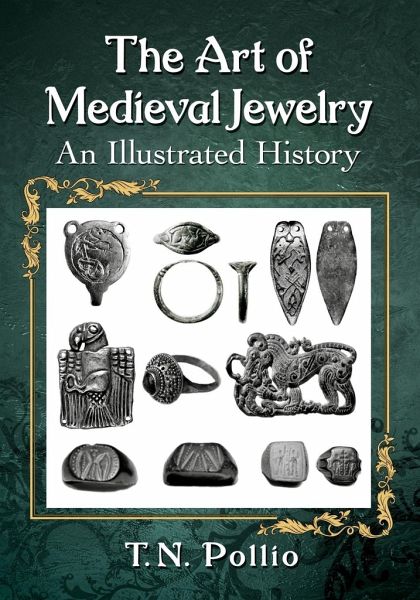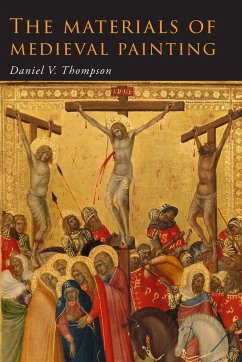
The Art of Medieval Jewelry
An Illustrated History
Versandkostenfrei!
Versandfertig in 1-2 Wochen
57,99 €
inkl. MwSt.

PAYBACK Punkte
29 °P sammeln!
What are the origins of the imagery and designs on common jewelry and portable artwork between late antiquity and the Middle Ages? These dynamic centuries encompass the transformation of the Greco-Roman world into the nascent kingdoms and medieval states upon which most modern European nations are based. The choices of jewelry and other forms of personal expression among the lower classes in ancient times is notoriously difficult to contextualize for a number of reasons. Nonetheless, these precious articles were expressions of individual identity as well as signifiers of rites of passage. As s...
What are the origins of the imagery and designs on common jewelry and portable artwork between late antiquity and the Middle Ages? These dynamic centuries encompass the transformation of the Greco-Roman world into the nascent kingdoms and medieval states upon which most modern European nations are based. The choices of jewelry and other forms of personal expression among the lower classes in ancient times is notoriously difficult to contextualize for a number of reasons. Nonetheless, these precious articles were expressions of individual identity as well as signifiers of rites of passage. As such, they reflect not only the people who wore them, but also the social milieu and artistic trends at that moment in time. This new study assists in identifying the types, origins and routes of transmission of personal artwork, particularly finger rings, across Europe and Byzantium, an area of study that has been neglected in previous works. Some of this material represents the first time relevant research from Central and Eastern Europe has been translated and made available to the general reader in the English-speaking world.













